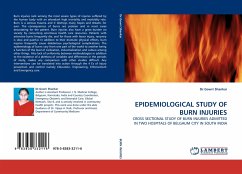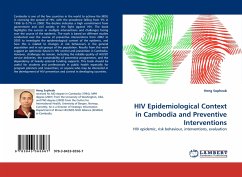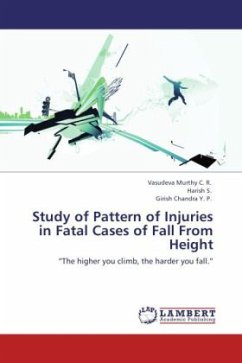
EPIDEMIOLOGICAL STUDY OF BURN INJURIES
CROSS SECTIONAL STUDY OF BURN INJURIES ADMITTED IN TWO HOSPITALS OF BELGAUM CITY IN SOUTH INDIA
Versandkostenfrei!
Versandfertig in 6-10 Tagen
39,99 €
inkl. MwSt.

PAYBACK Punkte
20 °P sammeln!
Burn injuries rank among the most severe types of injuries suffered by the human body with an attendant high mortality and morbidity rate. Burn is a serious trauma and it destroys many hopes and dreams for ever. The consequences of burns are protean and in most cases devastating for the patient. Burn injuries also have a great burden on society by consuming enormous health care resources. Patients with extensive burns frequently die, and for those with lesser injury, recovery is slow and painful. In addition to their dramatic physical effects, burn injuries frequently cause deleterious psychol...
Burn injuries rank among the most severe types of injuries suffered by the human body with an attendant high mortality and morbidity rate. Burn is a serious trauma and it destroys many hopes and dreams for ever. The consequences of burns are protean and in most cases devastating for the patient. Burn injuries also have a great burden on society by consuming enormous health care resources. Patients with extensive burns frequently die, and for those with lesser injury, recovery is slow and painful. In addition to their dramatic physical effects, burn injuries frequently cause deleterious psychological complications. The epidemiology of burns vary from one part of the world to another being a function of the level of civilization, industrialization and culture among other things. Also lack of uniformity between methodologies in addition to the existence of a plethora of variables and differences in the periods of study, makes any comparison with other studies difficult. Any interventions can be translated into action through the 4 Es of injury prevention and control namely Education, Engineering, Enforcement and Emergency care.












